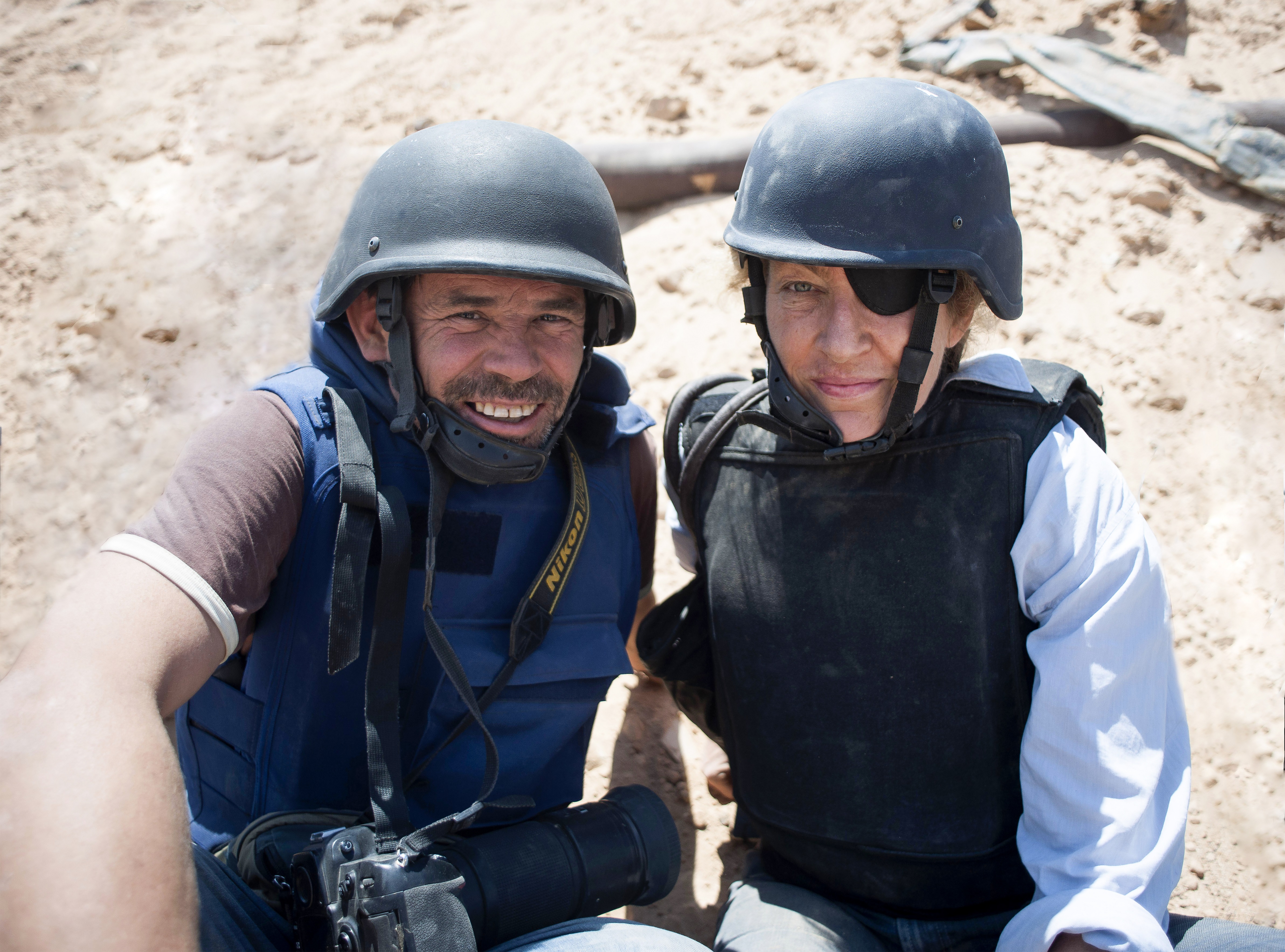
A companion piece to A Private War, Under the Wire tells the incredible true story of Marie Colvin and Paul Conroy in their own words.
Marie Colvin’s story may have physically come to an end in Homs but her legacy extends far beyond the reaches of Syria. Her colleagues at the Sunday Times make sure of this. More importantly, photojournalist Paul Conroy has written their story in the book of the same name.
Marie and Paul found their way to Homs in February 2012 and made camp in the Baba Amr suburb. They were their on a mission–to tell the story of the innocent civilians under attack. As everybody knows, Marie lost her life during the bombardment of the building housing the makeshift media center by the Syrian military. There’s quite a bit of the ill-fated assignment featured in the film including what turned out to be her final report with Anderson Cooper. Soon thereafter, Marie Colvin and French photographer Remi Ochlik would lose their lives.
There’s a cost that comes with telling the truth. In some instances, it means journalists will sacrifice their lives. Marie Colvin was one such journalist. She went to areas of the world that other people would not dare to travel because of the risk. This was important to Colvin because it meant telling stories of people who couldn’t do it themselves. In one such instance, it meant traveling to Sri Lanka to report on an unreported war. While this trip got the news out, it would affect her career in many ways. This was when the journalist lost the use of her eye due to shrapnel from a grenade explosion. We get more insight about what happened to Colvin while in Sri Lanka.
Paul Conroy opens up on film about what he and Marie saw. If seeing the events play out in A Private War was enough to make my gut sink, the documentary only makes things hit harder. These were innocent civilians under attack fighting to stay alive. I still remember watching the kid dying on the operating table. What we see is the original footage in the documentary and it’s just as sad and angry.
“This wasn’t war as I knew it, or Marie knew it,” Conroy says of what they saw in Homs. “It was slaughter.”
Where A Private War ends, Under the Wire helps to fill in the gaps. Conroy was badly injured as a result. He wasn’t alone. French journalist Edith Bouvier also suffered injuries. Photojournalist William Daniels and Conroy’s translator, Wa’el, were also trapped with them. With no hope of getting out, they do the only thing they can–turn to YouTube in order to get their story out there.
Filmmaker Chris Martin allows us to experience the events in Homs as Marie and Paul did. When we aren’t watching archival footage, it’s that of on-camera interviews. There’s a thriller aspect to this documentary even when we know what happens with Colvin’s life. My hat is off to editor Dudley Sargeant for going through all the footage. The final cut is just north of 90 minutes but this film could possibly be even longer.
Under the Wire speaks to the importance of documentary films. Where a narrative feature doesn’t include a part of the story–or worse, embellish the truth altogether–documentaries help to tell us the true story. Journalists still have a job to do by working hard to report the truth. Unfortunately, there are those serving as elected officials who refer to such reporting as “fake news.”
DIRECTOR: Chris Martin
FEATURING: Paul Conroy, Sean Ryan, Lindsey Hilsum, Wa’el, Edith Bouvier, William Daniels
PAUL CONROY – Photojournalist, Sunday Times
SEAN RYAN – Foreign Editor, Sunday Times
LINDSEY HILSUM– International Editor, Channel 4 News
WA’EL – Syrian Translator
EDITH BOUVIER – Journalist, Figaro Newspaper
WILLIAM DANIELS – Photojournalist, Panos Pictures





